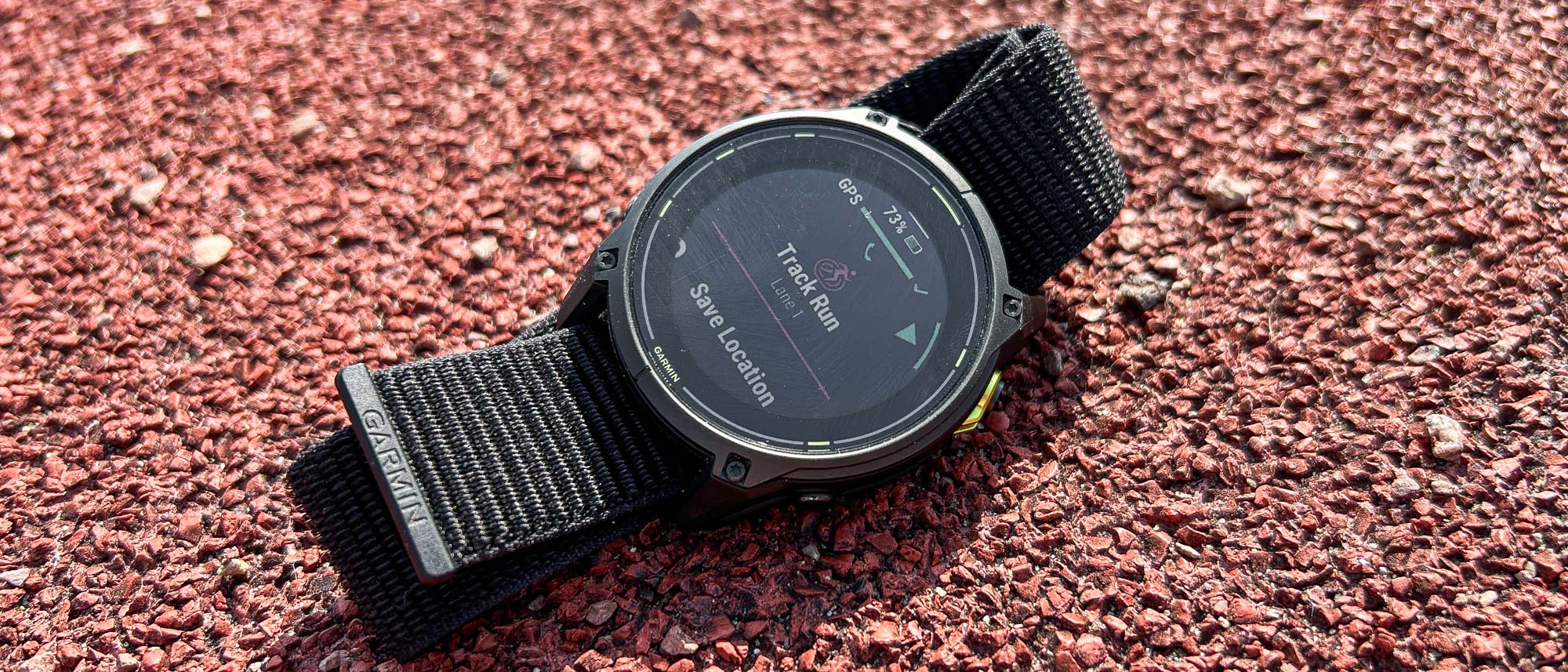Tom's Guide Verdict
The Garmin Enduro 3 is a sports watch built to last a long time, both in terms of battery life and durability. It offers outstanding sports tracking and is a cheaper option than the Fenix 8, despite having better battery life. If you don’t need the mic and speaker or AMOLED display on the Fenix 8, the Enduro 3 is better value, and it’s actually cheaper than the Enduro 2 as well.
Pros
- +
Very long battery life
- +
Light for a big watch
- +
On-board maps
- +
More affordable than Fenix 8 and Enduro 2
Cons
- -
No mic and speaker
- -
Display less bright than AMOLED Fenix 8
Why you can trust Tom's Guide
The Garmin Enduro 3 is the best Garmin watch for people who value battery life above all and still want the top sports tracking and navigation features available from the brand. It’s lighter and cheaper than the Garmin Fenix 8, despite lasting longer, and priced more affordably than the Enduro 2.
While it’s missing some features you get on the Fenix 8 — namely, an onboard mic and speaker, AMOLED screen, and diveproof design — the Enduro 3 still stands out as one of the best smartwatches for adventurous or very sporty people.
In my Garmin Enduro 3 review, I’ll compare it to Garmin’s other top watches including the Fenix 8 and older models like the Fenix 7 Pro that might offer better value. We'll also see how the Enduro 3 stacks up against rivals from other brands like the Coros Vertix 2S and Suunto Vertical.
Garmin Enduro 3 review: Price and availability
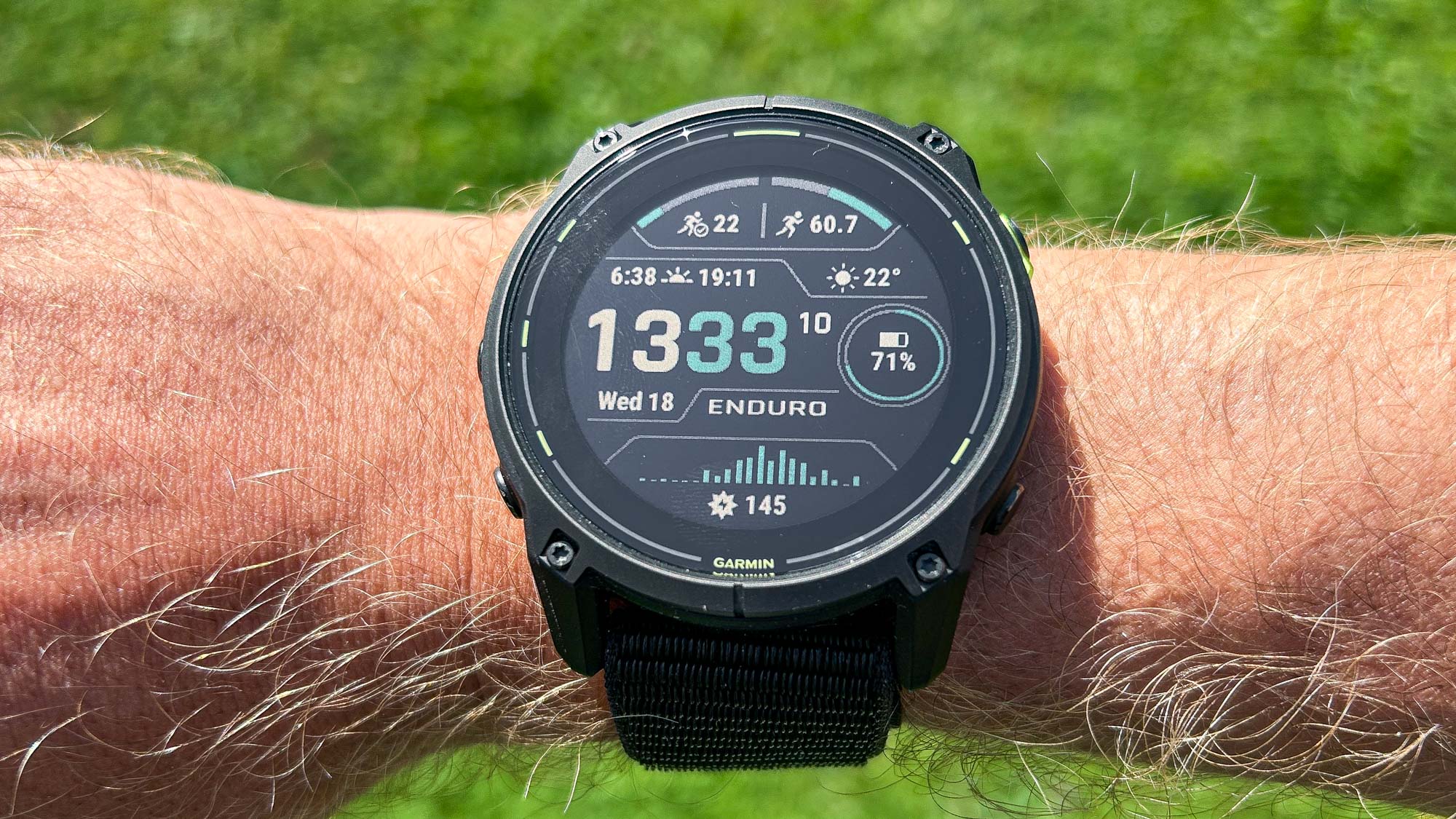
The Garmin Enduro 3 costs $899 in the U.S. and £769 in the U.K., which is a drop in price from the Garmin Enduro 2 ( $1,099 / £929 at launch). I’ve been reviewing Garmin watches for many years, and it’s rare that a watch drops in price with a new model, so this is a welcome surprise.
As well as being cheaper than the Enduro 2, the Enduro 3 is cheaper than the new Garmin Fenix 8, which starts at $999 / £949. The equivalent Fenix 8 would actually be the 51mm Fenix 8 solar, which is $1,199 / £1,039, so the Enduro 3 is a substantial saving.
Garmin Enduro 3 review: Specs
| Price | $899.99 |
| Size | 51 x 15.7mm |
| Display | 1.4in 280 x 280 MIP |
| Bezel | Titanium |
| Screen | Sapphire |
| Case weight | 57g |
| Water resistance | 10ATM, dive 40m |
| Storage | 32GB |
| Battery life (watch mode) | 36 days (90 days with solar) |
| Battery life (all-systems GPS) | 80 hours (144 hours with solar) |
Garmin Enduro 3 review: Design and display
Unlike the Fenix 8, which comes in two models, different colors, and three different sizes, the Enduro 3 comes in just one style. It’s a black 51mm watch with a titanium bezel and case back and a sapphire crystal screen. It comes with a nylon UltraFit band, which is lighter than Garmin’s silicone band, and also more comfortable in my experience.
The Enduro 3 is light in general, given its size. The case weighs 57g and even with the strap it’s just 63g. In comparison the titanium 51mm Fenix 8 solar is 67g without its silicone strap, and 95g with it.
Garmin’s aim with the Enduro 3 was to make it lightweight, durable and long-lasting in terms of battery life. To achieve this goal, some of the smart features you get on the Fenix 8 have been sacrificed. There is no mic and speaker on the Enduro 3, and it doesn’t have an AMOLED screen, instead sporting the same 1.4-inch memory-in-pixel (MIP) display you get on the Fenix 8 solar 51mm model.
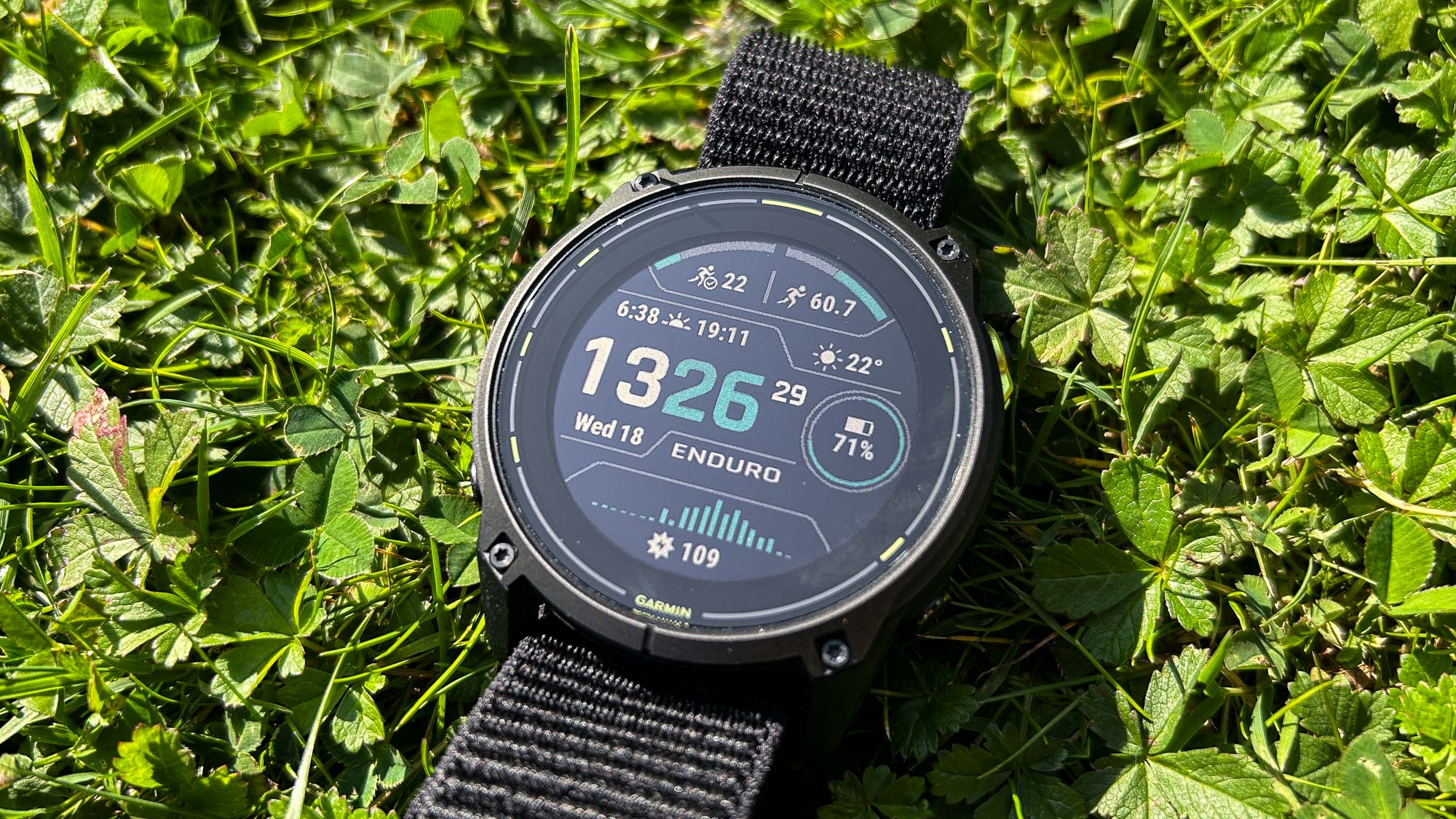
A ring of solar panels runs around the screen of the Enduro 3, which is a change from the Enduro 2 where the entire screen doubles as a solar panel. This means that the screen is clearer on the Enduro 3. It also means that the solar panels have been improved to harvest twice as much energy as the ones on the Enduro 2.
I have been testing the Enduro 3 at the same time as the Fenix 8 AMOLED, and the display on the latter is brighter and clearer in most conditions. However, it's a tie when in bright sunlight where MIP displays are always very clear. The display on the Enduro 3 is good, but I do prefer an AMOLED watch myself, especially as the battery life on the Fenix 8 is still very good.
While the Enduro 3 doesn’t have the leakproof buttons on the Fenix 8 and is not suitable for diving, it still has a 10ATM waterproof rating. It also sports Garmin’s usual five-button setup, which you can use as well as or instead of the touchscreen to navigate the menus and widgets on the watch.
Under the hood, the Enduro 3 boasts an array of sensors including an altimeter, a pulse oximeter and a GPS chipset that offers multi-band tracking for more accuracy. It also features Garmin’s latest Elevate Gen5 optical heart rate sensor, which can take ECG and skin temperature measurements, and is more accurate in general than the sensor on the Enduro 2.
Other features include a handy built-in flashlight on the top of the watch that has four brightness settings plus a red light mode. I found this useful for walking down dark stairs to settle my crying toddler during the night, but it will mainly be handy as an extra light for camping or ultramarathon events where you run or hike through the night.
Garmin Enduro 3 review: Sports tracking and training analysis
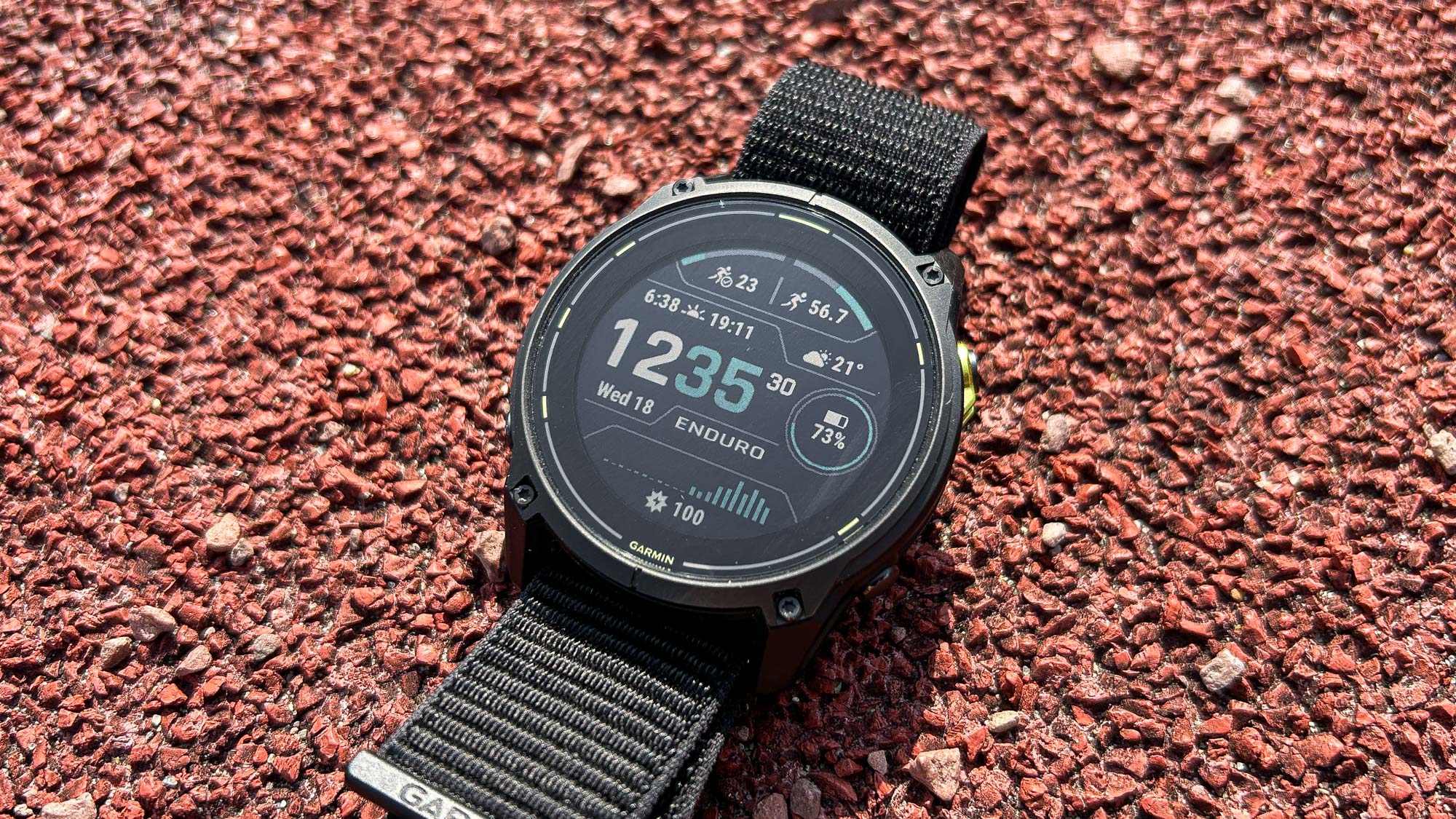
Aside from the diving modes you get on the Fenix 8, the Enduro 8 has all of Garmin’s sports tracking and training analysis features, including a wide variety of sports modes. All the main sports are covered, and there is a dedicated track running mode, along with a triathlon mode with automatic transitions.
As with any Garmin watch, a high degree of customization of your data fields for each sport is possible, and with the Enduro 3, you can view maps within an activity to follow routes and see the elevation you have coming up.
The training analysis is extensive and includes a rating of your overall endurance and ability to climb hills, two scores that will be useful to work on if you are an ultramarathon runner or a marathon runner like myself. I find the endurance score a useful metric to track during high-mileage training blocks.
You can also track your training load to see if it’s well balanced, view race predictions for running events (these were highly optimistic for me), and an estimate of your VO2 max. There are a lot of stats to dive into if you are so inclined, and if not, you can see key information at a glance through color-coded graphs and the Training Readiness rating, which is scored out of 100 and pulls in a few measurements to show the state of your body that day.
The Enduro 3 provides the same excellent sports tracking experience as Garmin’s other top watches, but that includes older models like the Enduro 2 and Fenix 7 Pro, and it’s not a big upgrade on what has come before on this front.
Garmin Enduro 3 review: GPS and HR accuracy
Throughout my testing of the Enduro 3, I’ve been comparing its heart rate accuracy to the readings from a chest strap, and looking at the GPS tracks to check for any errors. I’ve been running almost every day with the watch as well as cycling and doing strength and yoga sessions, and for the most part, the accuracy has been very good.
The Enduro 3 has Garmin’s latest heart rate sensor, and it consistently reads in line with the chest strap, even during races and interval sessions. The only times the optical sensor has struggled was in workouts with very short reps, such as a hill session I ran with 30-second efforts. The Enduro 3 missed a lot of the spikes and dips in my heart rate, but this kind of session challenges any optical sensor in my experience.
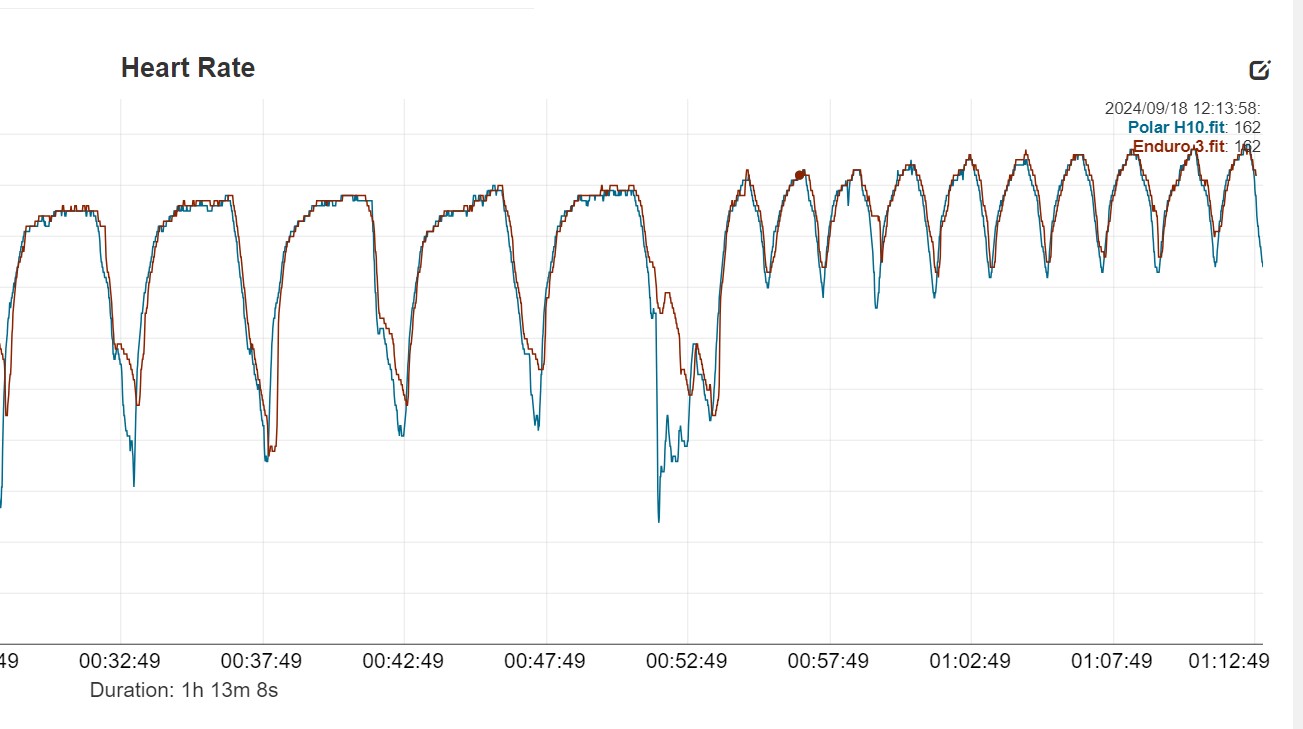
Purple - Polar H10 monitor
Brown - Enduro 3
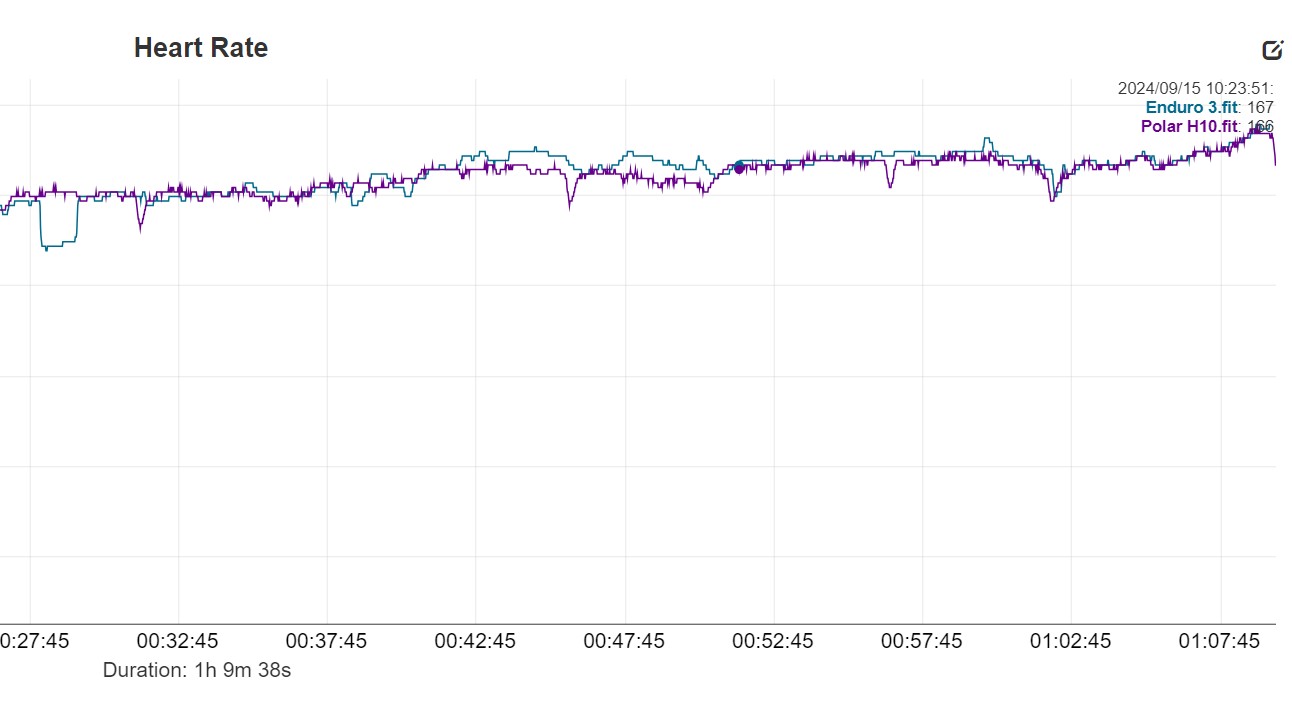
Purple - Polar H10 monitor
Blue - Enduro 3
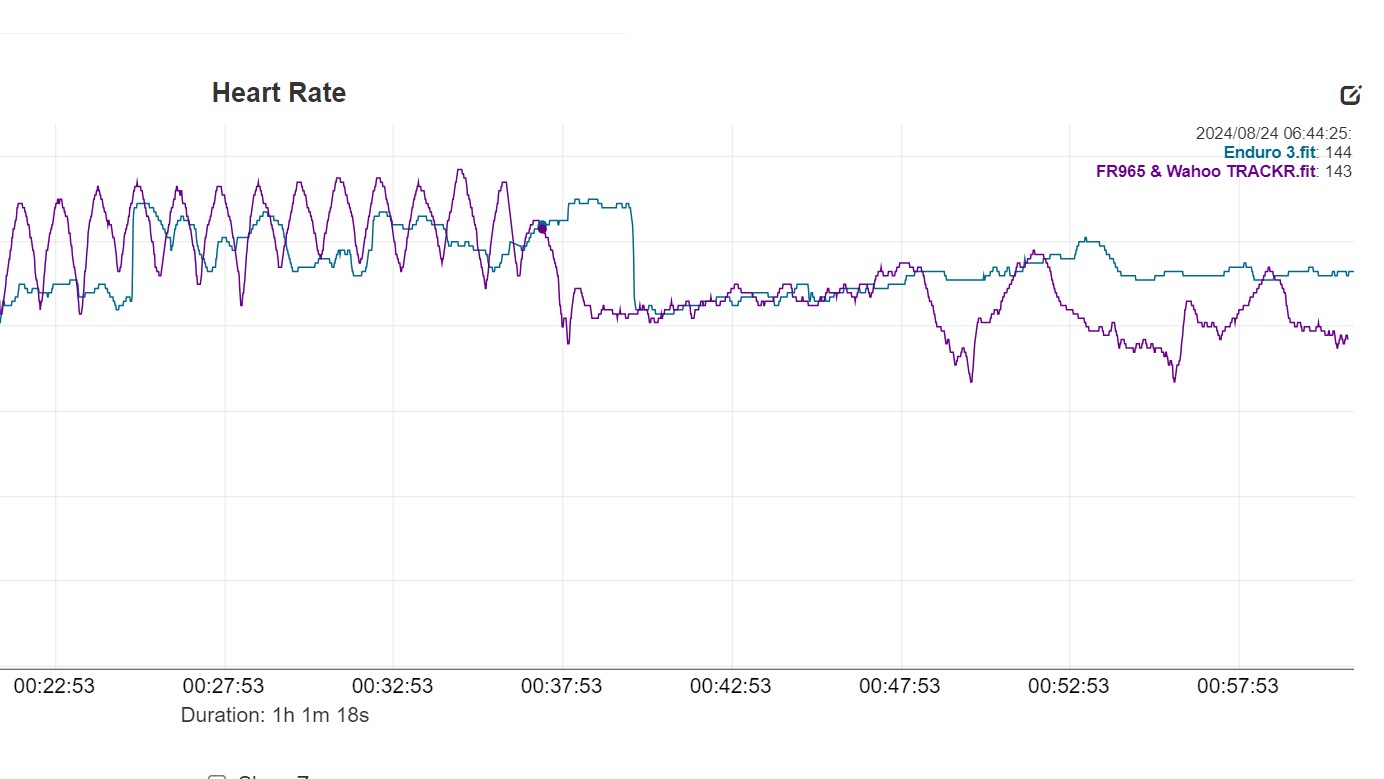
Purple - Wahoo TRACKR HR monitor
Brown - Blue
I’ve also found the GPS accuracy to be excellent, using both the most accurate multi-band mode and the AutoSelect mode, where the watch switches between GPS modes to balance accuracy and battery life. I’ve seen no erratic pacing stats on the watch, and it produced a perfect track during a half marathon race where the route was unfortunately slightly short — something I suspected had happened partly because the Enduro 3 showed 20.91km instead of 21.1km at the end.
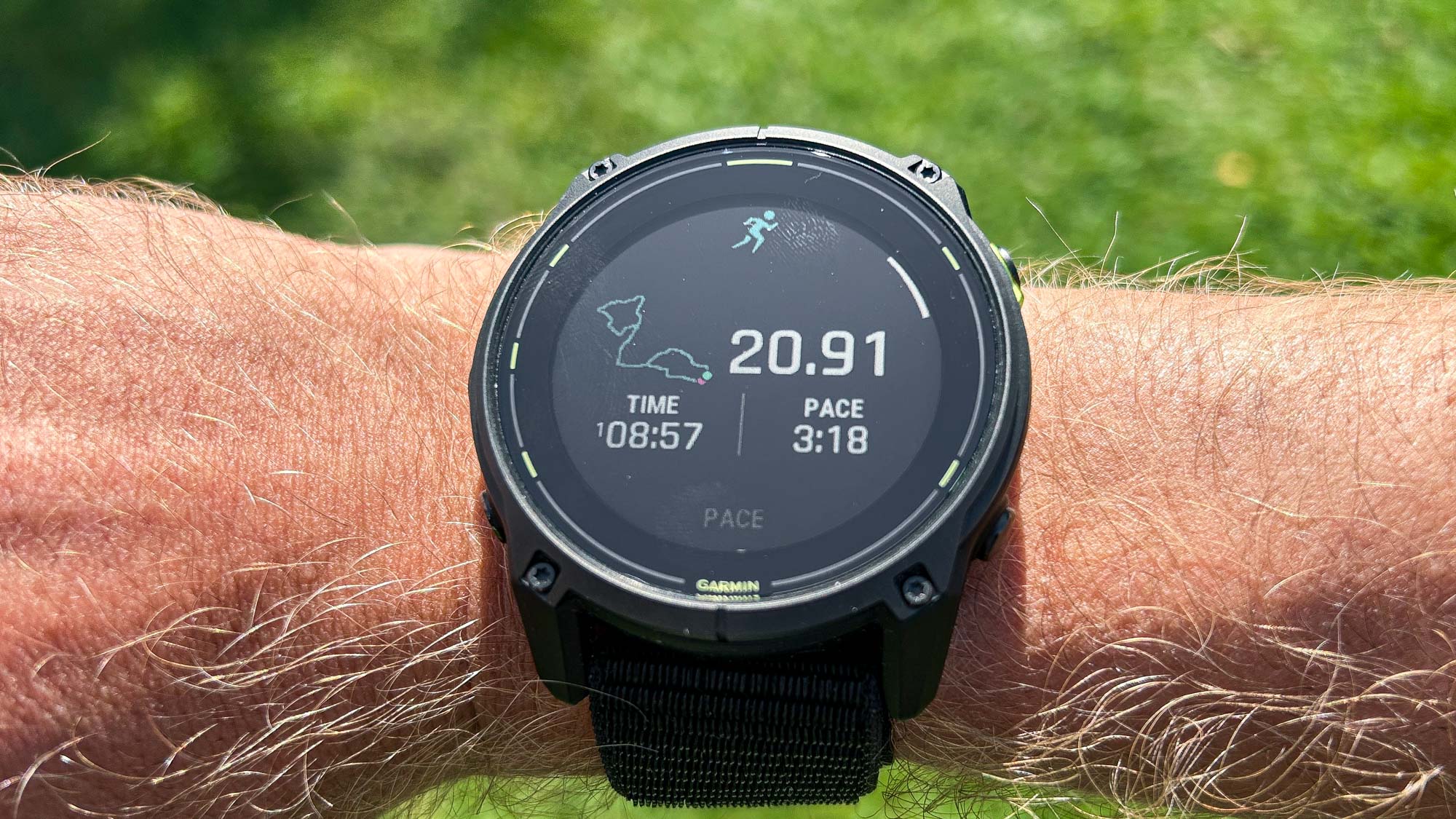
Garmin Enduro 3 review: Battery life
If you’re buying the Enduro 3, one of the main reasons is likely to be its excellent battery life. Even when running every day bar one, the watch lasted me 17 days on its first charge, and it’s tracking for 18 to 19 days on the second. That’s a little longer than the Enduro 2 lasted me during a test where I wasn’t running quite as frequently, so there is a small improvement in battery life with the new watch.
You can also easily extend that number by using a different GPS mode, or if you have more rest days — on days I didn’t run the battery life barely dropped at all. Even more important to note is the fact I was using the watch in London, where it’s fair to say I didn’t get the most out of the solar panels.
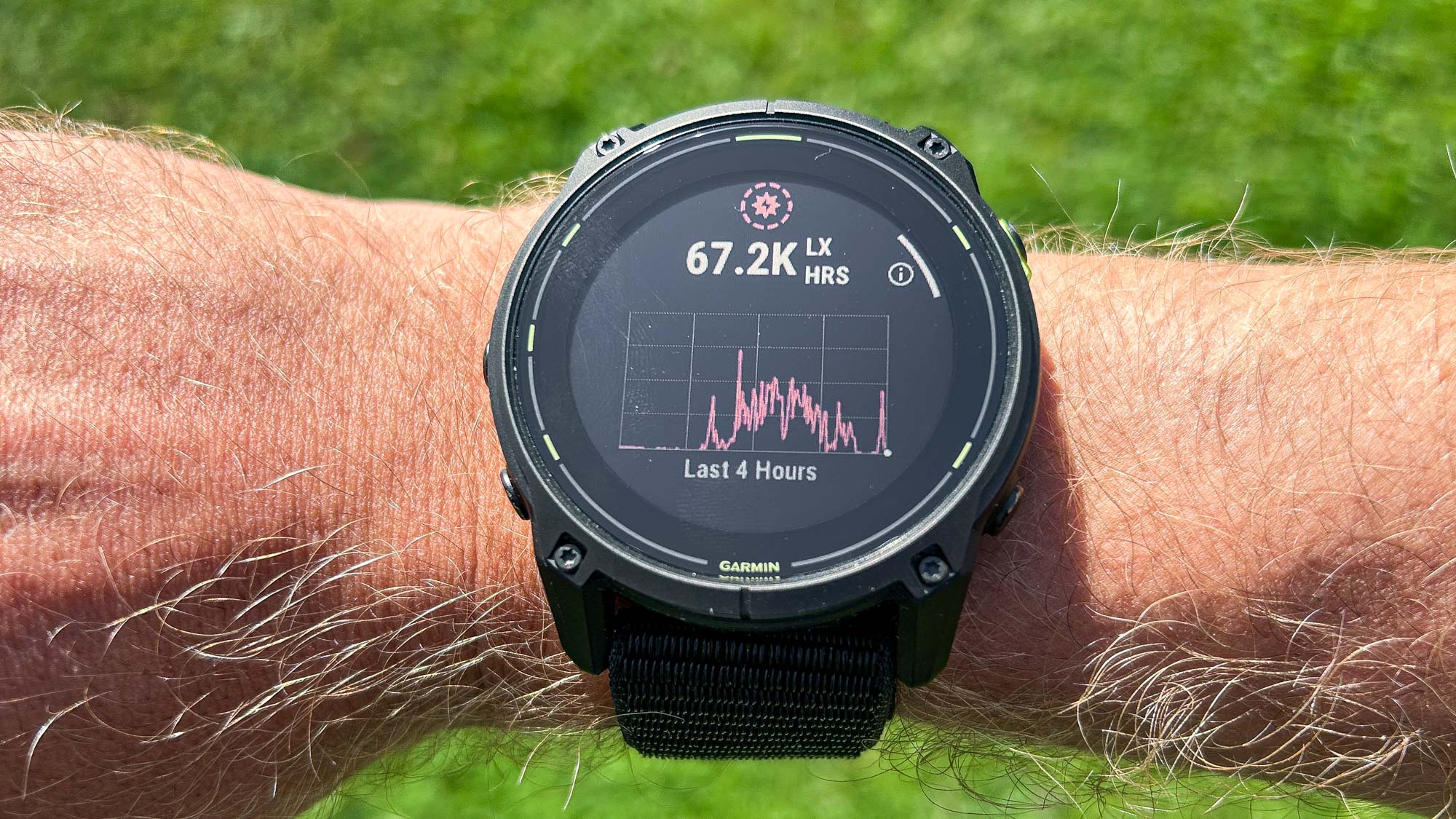
I usually only averaged 30K lux hours per day with the watch, whereas Garmin’s solar battery estimates are based on getting 150K lux hours, so if you’re outside more than me in a sunny environment, then you can expect considerably longer battery life.
During activities, the Enduro 3 would often be using less than 1% battery per hour in AutoSelect mode, which is extraordinarily good. However, this would come down a little more when running in environments that require more power-intensive GPS modes, such as when under tree cover or in the center of cities with tall buildings.
Garmin Enduro 3 review: Maps and navigation
Maps were missing from the original Enduro, a mistake Garmin rectified with the Enduro 2. The Enduro 3 inherits its predecessor's maps and also has all of the brand’s best navigation features. The color maps are visible during activities and a new swipe control allows you to unlock the touchscreen on that page so you can move around the map using your fingers if you prefer that to button controls.
You can create routes to follow in the Garmin Connect app, ask the watch to make routes for you, or just go out and get lost and use the back-to-start or round-trip features to guide you home. Garmin’s routable maps are a level up on those of other brands, with more detail and the ability to create and adjust routes on the go.
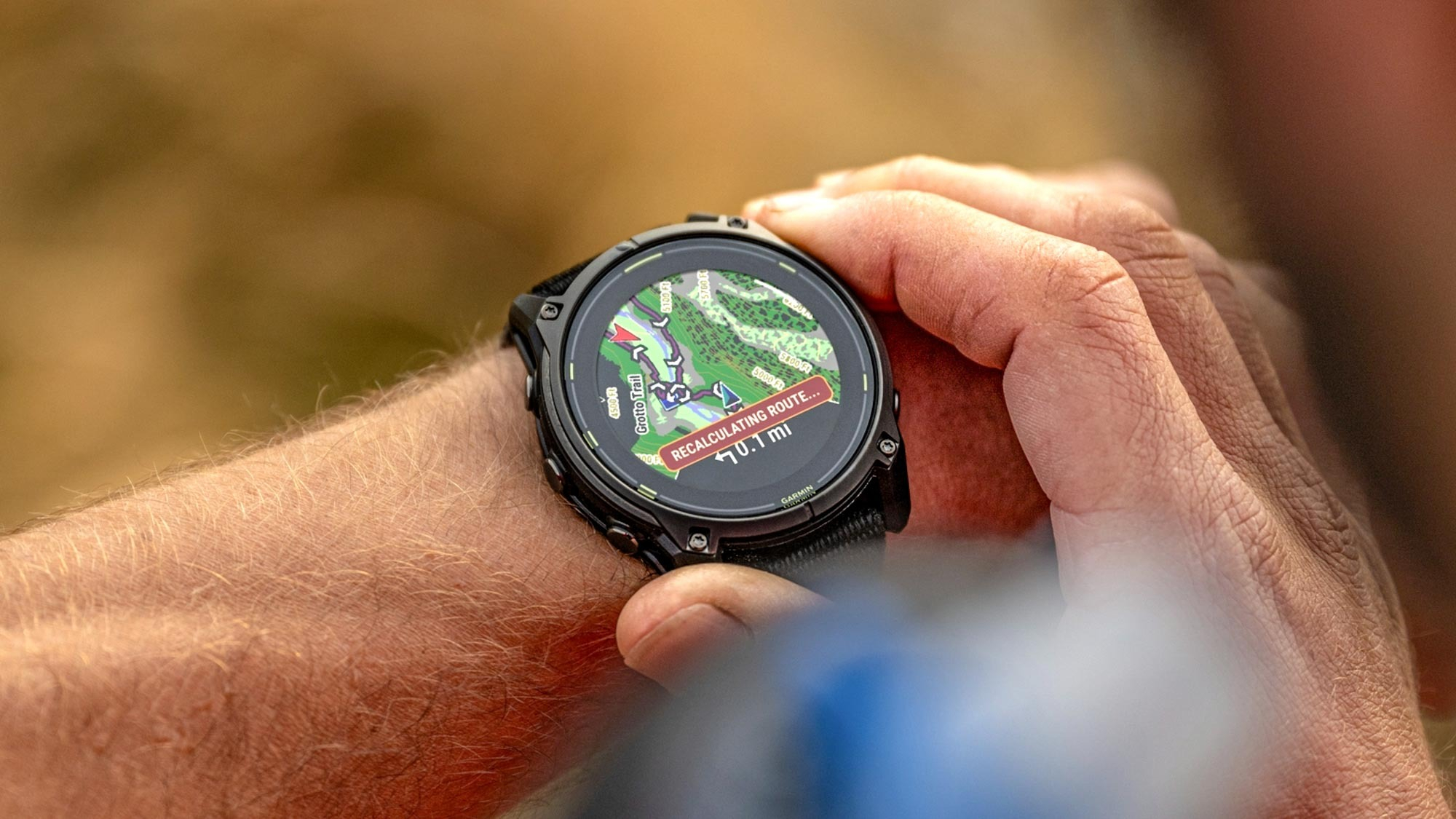
One feature I love on all Garmin watches with maps is ClimbPro, which shows the individual climbs and descents on your route so you can individually judge your effort during them, which mainly stops me from going too fast at the start of a long uphill section.
While the navigation features on the Enduro 3 are great, they are more or less the same across Garmin’s top watches from the Forerunner 955 up, which all have maps. I would also say that the maps are one area where it’s beneficial to have an AMOLED watch, because they are clearer, though it was not hard to navigate using the Enduro 3’s MIP display.
Garmin Enduro 3 review: Smart features
The Enduro 3 does have smart features like music storage — it can link up with premium accounts for Spotify, Amazon Music and Deezer to wirelessly transfer your music across — and NFC payments through Garmin Pay. It will also show your notifications and the Connect IQ app store has a few handy apps and a lot of watch faces you can add.
It’s not a full smartwatch though, lacking cellular connectivity or the huge array of apps you can get for iOS or Android devices. It also doesn’t have the mic and speaker featured on the Fenix 8, with Garmin opting to leave out those features and make the Enduro 3 more focused on battery life. That makes sense to me as lots of people just want a long-lasting watch and don’t use the smart features.
Should you buy the Garmin Enduro 3?
The Garmin Enduro 3 is an attractive option for athletes who want the best battery life they can get, but it’s not just a long-lasting watch, it also contains almost all of Garmin’s key features in a lightweight, good-looking design.
Add in the fact that Garmin actually reduced the price and there’s a strong case for opting for the Enduro 3 over the Fenix 8 solar, unless you really want the mic and speaker, do a lot of diving, or want a smaller 43mm or 47mm watch.
Compared to the closest rivals from other brands — the Coros Vertix 2S and Suunto Vertical — the Enduro 3 has better navigation and training analysis features, with the sports tracking being pretty even across the three. I have found the HR sensor on the Enduro 3 to be more accurate than those of the other watches. It also has a built-in flashlight, which the others don’t
Stiffer competition might come from older watches in Garmin’s range, like the Fenix 7 Pro, or even the Enduro 2 if its price gets substantially reduced. Those watches deliver a similarly excellent user experience and long battery life, and are likely to appear in sales going forward.

Nick Harris-Fry is an experienced health and fitness journalist, writing professionally since 2012. He spent nine years working on the Coach magazine and website before moving to the fitness team at Tom’s Guide in 2024. Nick is a keen runner and also the founder of YouTube channel The Run Testers, which specialises in reviewing running shoes, watches, headphones and other gear.
Nick ran his first marathon in 2016 after six weeks of training for a magazine feature and subsequently became obsessed with the sport. He now has PBs of 2hr 27min for the marathon and 15min 30sec for 5K, and has run 13 marathons in total, as well as a 50-mile ultramarathon. Nick is also a qualified Run Leader in the UK.
Nick is an established expert in the health and fitness area and along with writing for many publications, including Live Science, Expert Reviews, Wareable, Coach and Get Sweat Go, he has been quoted on The Guardian and The Independent.
